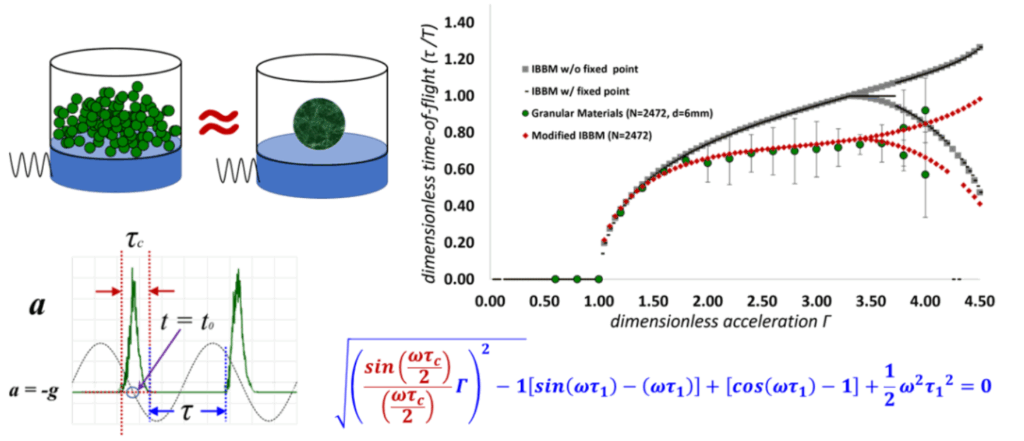Researchers propose a modified inelastic bouncing ball model that includes collision time between the ball and its container
30 Apr 2025

The behavior of granular materials subjected to shaking or vibration remains a complex puzzling phenomenon. A reliable strategy in science to deal with such challenges is to use toy models as a starting point for a more complete and nuanced understanding. A toy model is an idealized version of the real thing reduced to its essential features. (The determination of what is essential is not simple and depends on one’s interest and purpose.)
The inelastic bouncing ball model (IBBM) was identified as a toy model for shaken granular materials. The IBBM treats the bulk of granular materials as a single inelastic ball on a harmonically vibrating container. The ball plate detaches from the container once its acceleration exceeds gravity and loses all its kinetic energy whenever it collides with the container.
The next step towards understanding is to analyze the discrepancies between the toy model and the real thing. More than a decade ago, it was observed that the time-of-flight of the shaken granular materials is less than what is predicted by IBBM. The researchers back then suspected that this discrepancy was due to the failure to consider the duration of the collision. However, this line of thought was not fully pursued until recently.
Recently, the team of researchers from the University of the Philippines consisting of Junius Andre F. Balista of UP Los Banos and Christian Jay P. Magsigay and Caesar Saloma of UP Diliman revisited the problem. Using numerical simulation (discrete element method) and analytical modeling, they analyzed the collision between the granular material and the container. They proposed a modification to IBBM by considering the collision time between the ball and its container as the range of uncertainty of the lift-off time of the ball.
There is more to be done but this is the first successful effort to include collision time in the formulation of IBBM, not to mention that not much has been accomplished on the issue in more than a decade. The modification of IBBM makes it applicable to other granular material phenomena driven by the material properties of the grains, such as the mixing and segregation of granular mixtures.
Authors: Junius Andre F. Balista (Institute of Mathematical Sciences and Physics, University of the Philippines Los Baños), Christian Jay P. Magsaysay (National Institute of Physics, University of the Philippines Diliman) and Caesar A. Saloma (National Institute of Physics, University of the Philippines Diliman)
Read the full paper: https://link.springer.com/article/10.1007/s10035-024-01403-9
